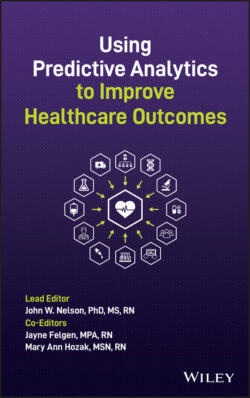Читать книгу Using Predictive Analytics to Improve Healthcare Outcomes - Группа авторов - Страница 17
The Art and Science of Making Data Accessible
ОглавлениеData can and should read like a story. The presentation of data in healthcare should be interesting and engaging because it reflects empirically what people are experiencing operationally. It is the experience of this author that when data is presented as part of the employees' story, they love it. Everybody likes to talk about their experience, and when a data analyst is able to tell them what they themselves are experiencing with the numbers to back it up, it places staff members at the edges of their seats.
The presentation of data in healthcare should be interesting and engaging because it reflects empirically what people are experiencing operationally.
With the advent of big data, machine learning, and artificial intelligence, we now too often turn one of our oldest, most cherished human traditions—storytelling—over to machines. The stories machines tell reveal patterns and relationships that staff members are familiar with, but they leave out the context, rendering their stories unrelatable. If your goal is to provide people with information they instantly recognize as accurate and relevant, your models must be specified to the people and contexts they presume to report on, and only then should they be examined empirically.
The stories machines tell leave out the context, rendering their stories unrelatable.
You are about to meet a 16‐step process for how to tell a story, using data, that is not only interesting; it is actionable operationally. No two organizations are the same, and no organization stays the same over time. Thus, it is critical to evaluate whether data presented within an organization accurately captures the context and nuance of the organization at a point in time.
Admittedly, the idea of 16 steps may initially feel prohibitively complex. As you spend time looking at the process in terms of some practical examples, however, you will find that what I have provided is simply a template for examining and sorting data which you will find not only simple to use, but ultimately quite liberating.
As you read through the steps, you are likely to intuit what role you would play and what roles you would not play, in this process. Some of the work described in the steps will be done by staff members closest to the work being analyzed, and some will be done by mathematicians, statisticians, programmers, and/or data analysts. If some of the content is unfamiliar to you or seems beyond your reach, rest assured that someone on the team will know just what to do.
If some of the content is foreign to you or seems beyond your reach, rest assured that someone on the team will know just what to do.
